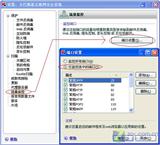Properly configuring a firewall is crucial for network security.
Properly configuring a firewall is key to network security.
Today, in the information age we live in, it can also be described as an era where viruses and hackers run rampant. Although this may sound somewhat pessimistic, it truly reflects the current state of networks. From the Internet to corporate intranets, from personal computers to mobile platforms capable of accessing the web, no place is entirely safe. Every attack by a network virus causes headaches not only for home users and businesses but also for helpdesk operators (800 hotlines) and even service providers.
However, after experiencing wave after wave of virus crises, people have begun to seriously consider network security. Nowadays, any enterprise setting up a network will take into account purchasing a firewall. Moreover, an increasing number of home users are installing firewalls on their computers or even at their broadband access points. In the near future, we might see firewalls appearing on mobile phones as well.
But a firewall isn’t just a psychological comfort barrier; only by properly using a firewall can real threats be kept outside. For many small and medium-sized enterprises (SMEs), firewall configurations often do not reflect the business needs of the company. If the protective execution settings of a firewall are not carefully and thoroughly defined according to internal business requirements, the security filtering rules added to the firewall may allow unsafe services and communications to pass through, introducing unnecessary risks and troubles to the enterprise network. A firewall can be likened to a data filter. If reasonable filtering rules are set beforehand, it can intercept non-conforming data packets and thus serve its filtering function. Conversely, if the rules are incorrect, it could produce counterproductive results.
...



